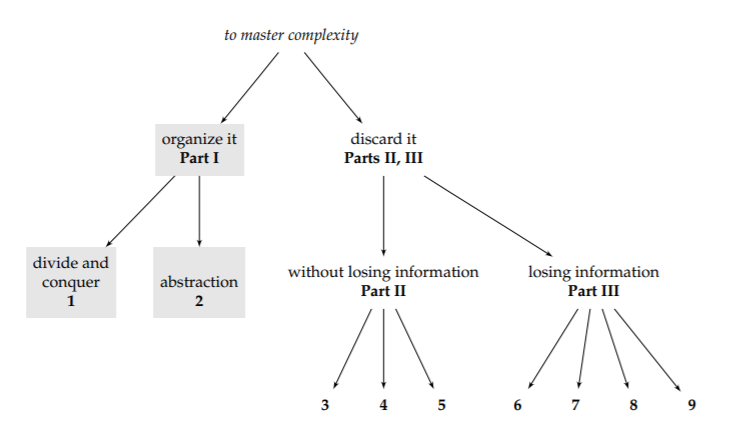Part I- Organizing Complexity
- Page ID
- 28834
We cannot find much insight staring at a mess. We need to organize it. As an everyday example, when I look at my kitchen after a dinner party, I feel overwhelmed. It’s late, I’m tired, and I dread that I will not get enough sleep. If I clean up in that scattered state of mind, I pick up a spoon here and a pot there, making little progress. However, when I remember that a large problem can be broken into smaller ones, calm and efficiency return. I begin at one corner of the kitchen, clear its mess, and move to neighboring areas until the project is done. I divide and conquer (Chapter 1).
Once the dishes are clean, I resist the temptation to dump them into one big box. I separate pots from the silverware and, within the silverware, the forks from the spoons. These groupings, or abstractions (Chapter 2), make the kitchen easy to understand and use.
In problem solving, we organize complexity by using divide-and-conquer reasoning and by making abstractions. In Part I, you’ll learn how.



